We woke up today reading Bernard Lafayette’s New York Times piece The Siege of the Freedom Riders. It’s somewhat surreal to think that yesterday while the world was reading Dr. Lafeyette’s NYT article we were meeting with him in person in Tuskegee!
It was also nice to see our trip on the ACU Today blog.
After breakfast we checked out of our hotel and said good-bye to Montgomery. What an amazing time we had in this city.
Leaving Montogmery we got on Selma to Montgomery Historic Trail. This was the highway the marchers walked during the Selma to Montgomery Voting Rights March.
The origins of the Selma to Montgomery march start in the years between 1961 and 1964 when the Student Nonviolent Coordinating Committee (SNCC) had been intensively engaged in voting registration efforts in Selma, the seat of Dallas County, Alabama. SNCC was running into fierce resistance. To energize their efforts SNCC made an appeal to King’s SCLC in 1964.
On February 18, 1965 the voting rights activists lead a peaceful night march in nearby Marion. The marchers were met by police. Suddenly, the street lights went out. Just why no one really knows. In the darkness the police got skittish and began beating the protesters. Twenty-six-year-old Jimmie Lee Jackson ran way from the melee with his mother and grandmother. They were pursued by some Alabama State troopers. In a cafe where they sought refuge, the police caught Jackson’s 82 year old grandmother and knocked her to the floor. Seeing this, Jackson jumped in front of his mother to protect her. Jackson was then shot twice in the gut by one of the troopers. He died eight days later.
The activist community was outraged. Some suggested that they should walk Jackson’s coffin all the way to Montgomery and lay it on the capital steps. Cooler heads prevailed, but the idea of a march on Montgomery stuck and began to take form with the focus to be on voting rights, the reason why the activists where in Selma in the first place.
On March 7, 1965 about 600 marchers, lead by (now congressman) John Lewis, set out from Selma to march to Montgomery. The first thing they had do was to cross the Edmund Pettus Bridge.
On the far side of the bridge waiting for them was a wall of state troopers set upon breaking up the march (in compliance with orders from Governor Wallace). The troopers set upon the protesters with clubs and tear gas, pursuing the fleeing marchers back up the bridge. Many of the troopers were on horseback and wielding clubs, swinging at the marchers running on foot. Those witnessing the event claimed that the bridge was covered with blood, thus the day is known as “Bloody Sunday.”
In the wake of Bloody Sunday King and his supporters sought federal protection for the marchers. On March 16 the protection was granted and on March 21 the marchers set out again. This time, with federal protection, they would get all the way to Montgomery. More, the ranks of marchers had swelled. After Bloody Sunday thousands of people from around the nation descended upon Selma to participate. By the time they reached the steps of the capital in Montgomery the crowd had swelled to over 25,000.
Our day in Selma began at the National Voting Rights Museum.
After visiting the museum the ACU Freedom Riders made their own walk over the Edmund Pettus Bridge, tracing the route of the Bloody Sunday marchers.
After walking the bridge we drove over to Brown Chapel where all the mass meetings were held and where all the marches began.
After lunch in Selma we got on the bus to head toward our last stop: Jackson, Mississippi.
Arriving in Jackson we were hosted for dinner by Hollis Watkins at his Southern Echo offices. Mr. Watkins was a SNCC worker in Mississippi in the 1960s working on voter registration. Mr. Watkins was a close ally of Bob Moses, one of the leaders in organizing Freedom Summer.
Sitting around the dinner table, Mr. Hollis shared stories of his childhood under segregation, of his early SNCC work, of his times in jail and, most importantly, of how his work with Southern Echo is continuing on with his movement work.
Also, Mr. Watkins is known for his singing. So we spent some time tonight singing freedom songs.
It was a wonderful way to end our trip. For two reasons. First, we’ve all been so immersed in Freedom songs this week that you now frequently hear someone on the bus humming to themselves “We Shall Overcome” or “Keep Your Eyes on the Prize.” I think the music of the movement has gotten into our bones. And our hearts. So singing with a veteran of the Civil Rights Movement, someone who sang these songs in churches and in jails, is a fitting conclusion to our trip.
Second, Mr. Watkins’ current work with community organizing and voter redistricting reminded us that “the movement” isn’t just dusty history. The work Mr. Watkins began with with SNCC 50 years ago is still his passion. There is more, much more, work to be done. And Mr. Watkins challenged our Freedom Riders to participate.
The struggle continues…

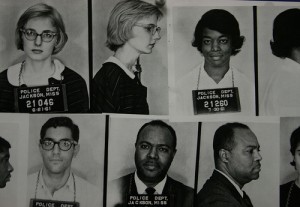

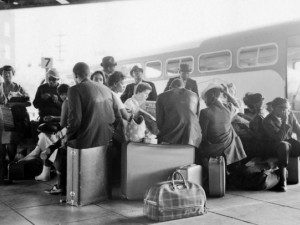

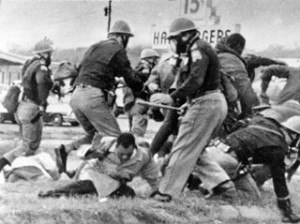

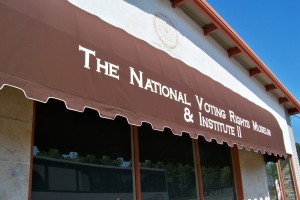
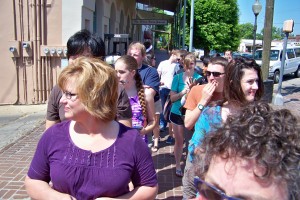
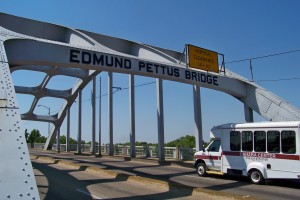
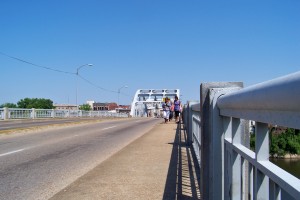

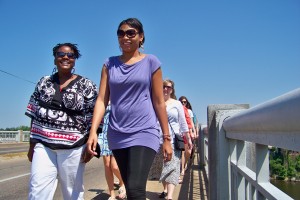
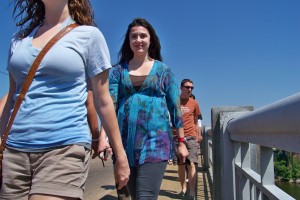
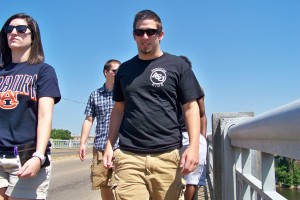
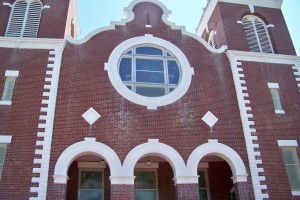
Add a Comment
You must be logged in to post a comment.